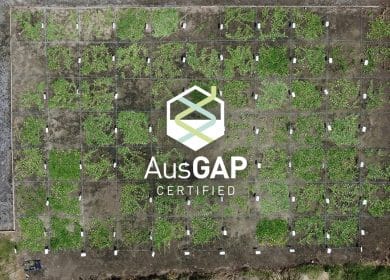New report reveals the impact of horticulture on the Australian economy

Australia has a diverse range landscapes and climatic conditions, this paved the way for a thriving horticulture industry, contributing significantly to Australia’s economy. A recent report commissioned by Hort Innovation has shed light on the vast economic contributions made by the Australian horticulture sector. In this article, we will discuss the key finding of the report, focusing on the crucial role of turf production within the horticulture industry.
What are the key findings of the horticulture report?
The ‘Contribution of Australian Horticulture Industry’ report spotlights 25 horticultural growing regions across the country, offering insights into the current and projected economic impacts of the horticulture sector at regional, state, and national levels. The significance of the horticulture industry is undeniable, as it reportedly contributed $15.2 billion to Australia’s GDP during the 2020-21 fiscal year. This figure is expected to grow, with projections indicating a 22.5% increase by 2030, reaching a potential $21.8 billion.
The influence of the horticulture industry extends beyond numbers and statistics, as it supports the livelihoods of many Australians. The industry is anticipated to drive nearly 10% increase in employment from 2020, leading to approximately 69,697 additional jobs by 2030. This growth reflects the industry’s commitment to both economic prosperity and social sustainability.
Another finding in this report is the ripple effect of value added in the horticultural industry. For every dollar of value added within the industry, an additional 27.6 cents reverberates throughout the broader economy. This phenomenon highlights the interconnectedness of various economic sectors and underscores the substantial influence horticulture has on Australia’s overall economic health.
What is reported on the turfgrass industry?
While a multitude of crops and produce contribute to Australia’s horticultural wealth, the report also delves into the specific contribution of turf production. Turf plays a pivotal role in the industry’s success. Horticultural regions across Australia are producing turf for urban spaces, sports fields, parks, lawns, and more.
The report reveals that in 2020-21 cultivated turf added $216.5m of value to the horticulture industry and Australia’s economy. This value added is expected to grow 14.5% by 2030 revealing growth within the industry while also growing in full time employment roles by 1.6%.
What are some stand out regions?
In this report North West Victoria emerges as a leader, reporting a Gross Value of Production (GVP) and value-added figures of $1.7 billion and $1.1 billion respectively. This represents 10.1% of the Gross Regional Product (GRP). Cultivated turf production in this region contributes to over 7,800 direct and indirect jobs, constituting 9.3% of the local workforce.
Metropolitan areas like Greater Melbourne and Greater Sydney make an appearance among the top horticultural regions. These cities stand out due to their extensive horticultural processing industries, growing vegetable sector, and turfgrass production that cater to urban populations. Sydney, for example, derives 43% of its horticultural GVP from processed products, while also generating significant revenue from turf, nursery, and flowers. This trend also indicated that even in densely populated areas, the demand for greenspaces remains high.
Richmond NSW has the highest share of nursery, cut flowers and turf reflecting 49.2% of the region’s total horticulture production value. It is followed by Moreton Bay, Perth, the rest of the NSW/ACT region, Melbourne, Brisbane, and Sydney.
The ‘Contribution of Australian Horticulture Industry’ report reveals economic insights, showcasing the significant role horticulture plays in shaping Australia’s financial landscape. Among the range of horticultural products, turf is a key player in enhancing urban aesthetics and providing substantial employment opportunities. The effects of the horticulture industry on the broader economy is becoming increasingly evident, underscoring the pivotal role it plays in Australia’s growth.


